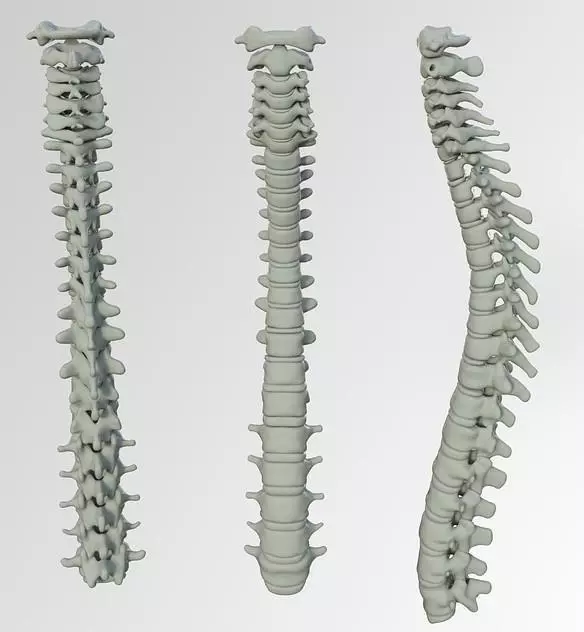If the intervertebral discs wear down, it may be that the patient's mobility is so severely restricted or movements can only be carried out with pain that the symptoms can only be corrected by using artificial intervertebral discs.
You can find out what these are and how artificial intervertebral discs work here.
Structure of the spine and healthy function of an intervertebral disc
The human spine consists of individual vertebrae that are connected to each other, but still have a certain mobility. The intervertebral discs are responsible for preventing the vertebrae from rubbing bone against bone.
But that's exactly what happens in the case of a herniated disc or severe wear and tear (e.g. due to being overweight or improper stress). As a rule, herniated discs are treated with physiotherapy and targeted gymnastics in order to effectively treat not only pain but also the causes. But in some cases it is simply too late for that. The degeneration process has progressed too far and the intervertebral disc can no longer fulfill its actual purpose as a shock absorber between the vertebrae.
In such cases, an artificial disc or disc prosthesis can help those affected.
The artificial intervertebral disc at a glance
The natural disc in the back is a soft buffer between the vertebrae, while the artificial disc is made of hardened metals. Titanium or a mixture of cobalt, chromium and molybdenum are usually used. If you were to hold the prosthesis in your hand, you would notice the rough structure. This makes it easier for the prosthesis to grow onto the vertebral bodies. Metallic extensions on the artificial intervertebral disc are also used for more stable attachment to the vertebra and prevent slipping (which would result in vertebrae rubbing against each other). Intervertebral disc prostheses are therefore ingrowth prostheses.
An artificial intervertebral disc is made from two metal plates and a movable core made of metal or polyethylene. The vertebrae lie on top and bottom of the artificial intervertebral disc and can move freely on it as if on a hemisphere.
In addition, a distinction is made between cervical prostheses for the neck area and lumbar prostheses for the loin area. Cervical prostheses are smaller and must be able to complement the special functionality and mobility of the cervical spine, while lumbar prostheses must primarily compensate for the pressure on the lumbar spine.
In addition, a distinction is made between partially coupled and uncoupled prostheses, with the latter allowing movements in all directions. Partially coupled prostheses, on the other hand, cannot rotate freely.
Of course, all intervertebral disc prostheses are individually adapted to the patient in order not only to cover the specific dimensions exactly, but also to compensate for the extent of the degeneration. After all, not every patient needs a full prosthesis that completely replaces the intervertebral disc.
Why artificial intervertebral discs help
Degeneration of an intervertebral disc can necessitate a disc prosthesis for patients, but this process is not entirely without risks. Because the use of an artificial intervertebral disc relieves the affected vertebrae, but increases the pressure on the neighboring segments, which means that they are exposed to increased wear. However, this is also a side effect of the stiffening of the intervertebral discs.
In the case of pain patients in particular, however, the prosthesis provides rapid relief and immobilizes the affected area. According to the latest findings, rehabilitation is easier than after a fusion.
The constant further development of the technology of the artificial intervertebral disc and the medical expectation that the patient's condition will be better in the long term than with a fusion indicate that the artificial intervertebral disc will be the preferred method in the treatment of degenerative diseases of the intervertebral disc, especially in the long term will be.

